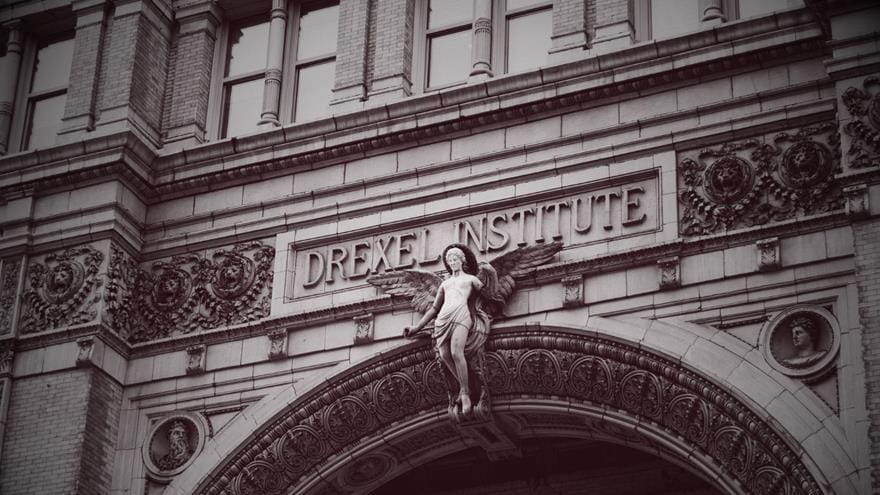Drexel Recreation Center Celebrates 10-year Anniversary
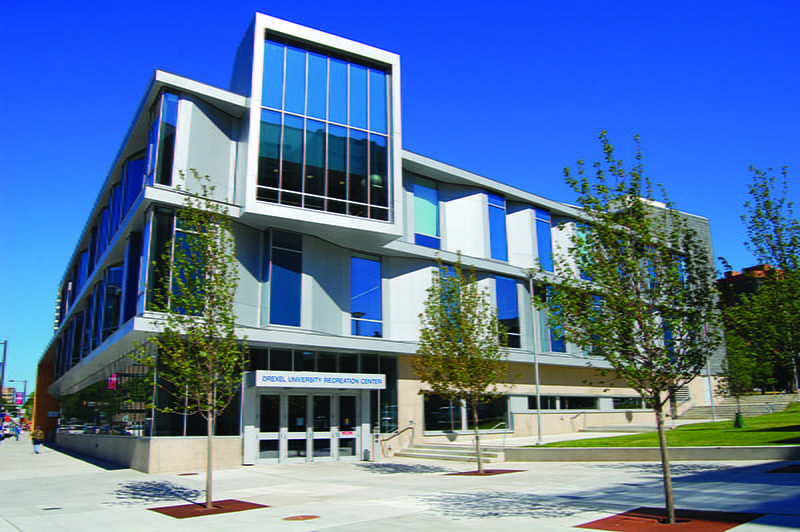
When Drexel University opened its Recreation Center in February 2010, it completely transformed the way that Drexel Dragons and community members could engage in physical activity on the University City Campus, as well as the look and feel of Market Street between 33rd and 34th streets.
In honor of the ten-year anniversary of the Recreation Center, Director of Athletics and Carl R. Pacifico Professor of Neuropsychology Eric Zillmer, PsyD, and Assistant Athletic Director of Recreation Bryan Ford talked about what the center has accomplished in a decade, and how it has evolved over the years.
Q: How has attendance been at the Recreation Center over the past 10 years?
Bryan Ford: Since opening its doors in February 2010, the Recreation Center has seen a multitude of students, faculty, staff, alumni and community members looking to enhance their wellbeing. There have been over 6.7 million visitors to the Recreation Center, with over 325,000 visits to group exercise classes and 98,000 climbers at the climbing wall.
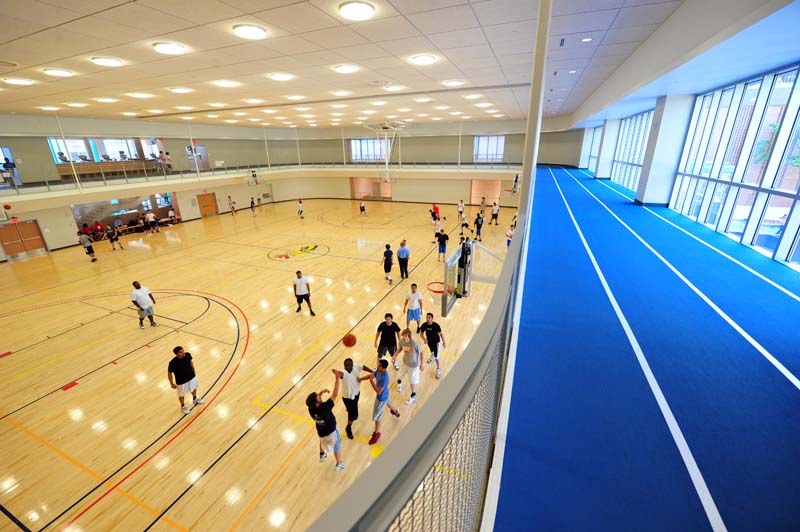
Eric Zillmer: When we planned the Recreation Center being 87,000 square feet in size, the naysayers told us it would be way too big. Well, we built it and they came — over 3,000 students a day during the academic quarter. It has become an important social nexus for our students.
Q: What are some unique events that have happened in the Recreation Center?
Ford: We are always trying to reinvent ourselves in Recreational Athletics to ensure we are meeting the growing needs and wants of the Drexel community. Over the years, we’ve tried some unique events including Human Hungry Hippos, paddleboard yoga, pickleball, shockwave, Comcast Building Climbing Challenge, indoor triathlon, dive-in movies, key log rolling, The Crux Climbing Competition and many more!
Zillmer: While the physical structure of the Rec Center is impressive, the programming of the space is equally as important. Our rec staff has done an unbelievable job in creating state-of-the-art exercise programming.
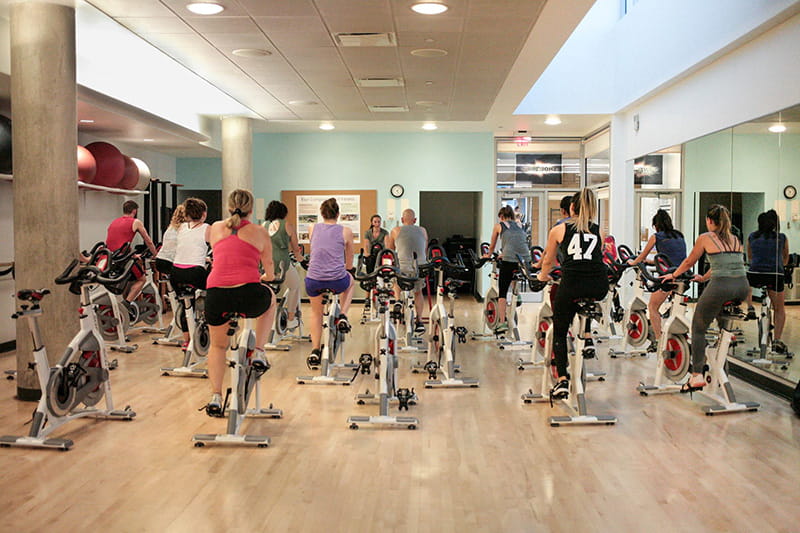
Q: How has the Recreation Center and its programming evolved over the last 10 years?
Ford: The fitness and wellness industry has evolved over the last 10 years to be more geared towards holistic wellness, with a focus on mental health and providing a community atmosphere. At the Recreation Center, it is important that we provide an experience that allows students and members to de-stress from everyday life. We also intentionally create outlets that enhances camaraderie, build friendships and encourages participants to build lifelong healthy habits.
Zillmer: It started by being a center for physical fitness and evolved into a social space, where our students meet, play and also work out. It has become the de facto new student union at Drexel.
Also notable is the fact that we hosted the nation’s first full-time therapy dog in a recreation center, with office hours and a Drexel ID card. We paid the dog a salary, which allowed for dog food and dog insurance. The Drexel therapy dog became and is a big hit with the students and the Drexel community. Now we have three therapy dogs: Chai, Espresso and Java.
Q: Has the Recreation Center been recognized for its efforts?
Ford: The Recreation Center has been recognized numerous times for a variety of reasons. From the architecture of the facility, designed by Sasaki Architects and Ewing Cole, to the programming, wellness and atmosphere, there have been a number of awards throughout the years. Some of these awards include:
- 2011 NIRSA Outstanding Sports Facility
- 2011 Athletic Business Facility of Merit
- 2015 #1 Gym in Philly from Philly.com
- University Primetime – Top 20 Most Impressive College Gyms and Student Rec Centers
- Top Counseling Schools.org – Top 30 Universities Leading the Way with Wellness
- College Magazine – Top 10 (# 7) Best College Gyms and Student Rec Centers
Zillmer: Winning best gym in Philly and # 7 in nation has been an unbelievable confidence builder for our athletics department in terms of being recognized like that. It really shows you that if you put your mind towards something, anything is possible.
Q: How did the Recreation Center come to be?
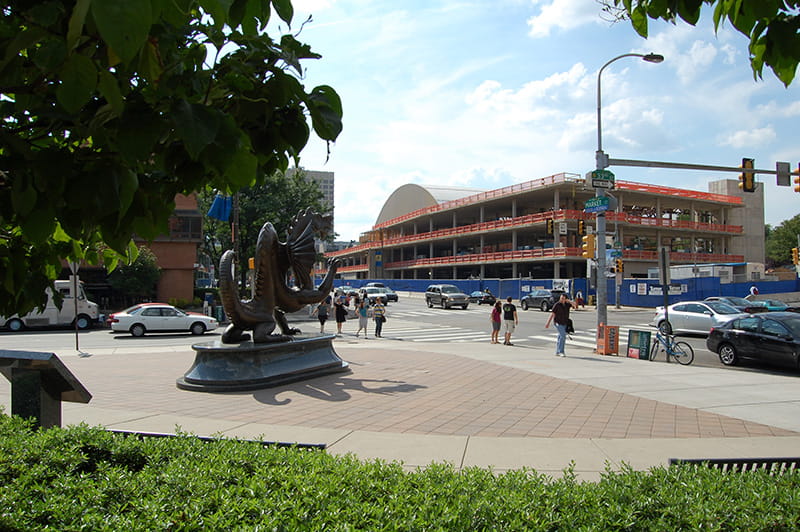
Zillmer: When I arrived as a faculty member on Drexel’s campus in 1988, there was the Physical Education and Activity Center (PEAC). It had a fitness room with two treadmills and two step climbers that served the entire University. When I became Athletic Director, it was clear to me we had to improve the fitness area. When I was an undergraduate at Rutgers University, I worked my way through college by being a personal trainer at Bob Boone Action Courts, a gym owned by the famous former Phillies catcher. So, besides being a life-long athlete, I was already exposed to the fitness industry early on.
We first built a larger wellness center in the basement of the building, now the Daskalakis Athletics Center, which is named after John Daskalakis ‘63, a Drexel men’s lacrosse Hall of Famer, and is affectionally called the DAC. But it was clear that was too small as well. We had to build something bigger, much bigger. And it had to be eye-popping.
It was a major heavy lift and building the Rec Center was probably my biggest accomplishment administratively, together with acquiring the Pennsylvania Armory in 2005 and starting Drexel’s Sports Management program in 2001. Not one of the senior administrators at the time actually was into personal fitness or working out, so it was a major leap for the leadership to see value in building a large fitness facility. The only way to get their attention was to use our own Drexel students and student government to persuade them to reconsider their position, and they did.
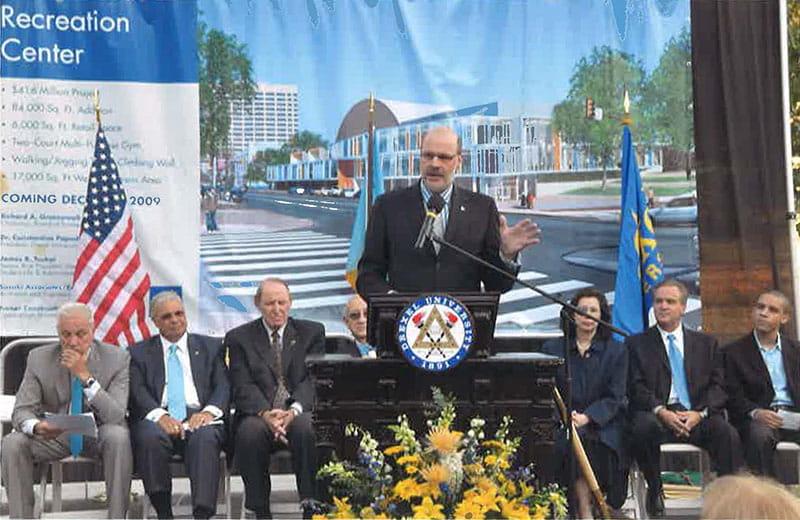
We hired Sasaki as our lead architects. When meeting with them, I remember that I thought it was odd that on the Sasaki team there was only an international representation. That, I think, was very influential in the end product, in a good way. The outside facade looks like a Japanese pagoda, by design, and the interior is decidedly European in style. What I think Sasaki got totally right is the transparent nature of the building. Whereas the “old” PEAC had no windows, the Recreation Center is all glass and transparent. As a sport psychologist, I believe that this adds to the idea that you’re working out collectively. This social dimension is something important to humans in terms of feeling part of a community or group.
I also remember we never had enough money. We budgeted $44 million for the project, but we needed $47 million to complete all of the bells and whistles. But for a while it did not look good. The squash courts that are near the entrance were to be a pit, the running track was out. And then I learned where the term “cutting corners” came from, when I saw a plan where the climbing wall was and, well, it had been deleted.
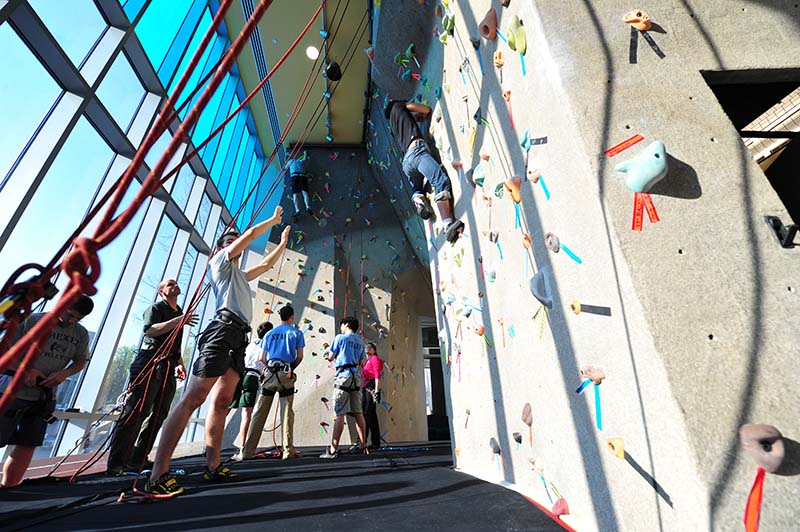
The biggest supporters outside of the Athletics Department were then-Senior Vice President for Student Life and Administrative Services Anthony “Tony” Caneris, then-President Constantine “Taki” Papadakis and student-government president Chris Duffy. Simply put, without them we could not have built it. But it all came together in the end and our University is off decidedly better for it.
Q: How did the Landmark Americana Tap & Grill within the building come to be?
Zillmer: Initially, the space where the Landmark sports bar is now was just a land-filled block, but the idea of putting an on-campus sports bar gained momentum and was first suggested by then-Senior Vice President of Student Life and Administrative Services Jim Tucker. We put out an RFP and Landmark Americana won the bid. They have done a terrific job of bringing food and entertainment to our campus.
Having the outside bar and the climbing wall together on the corner of 34th street was my idea. I grew up in the Alps and was always fascinated with the Eiger mountain’s north face and the hotel (Bellevue des Alpes) at the foot of the mountain, where tourists would sit on the veranda and use binoculars to watch climbers working their way up the north face. This idea was translated in miniature, with the fantastic Landmark patio where you can sit around a fire pit and watch our Drexel students scale the climbing wall. I don’t think I ever shared this publicly! Well, it is out now. That was the idea and I think it came out picture-perfect!
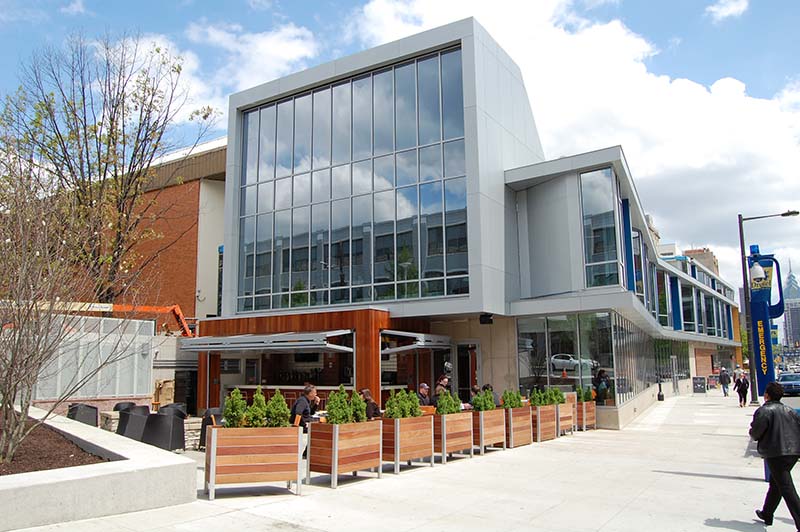
Q: Is there anything you would have done differently?
Zillmer: Besides the locker room being too small, I would have to say no. The Recreation Center, after 10 years, is just coming into its prime. Happy 10th birthday!
In This Article
Drexel News is produced by
University Marketing and Communications.

